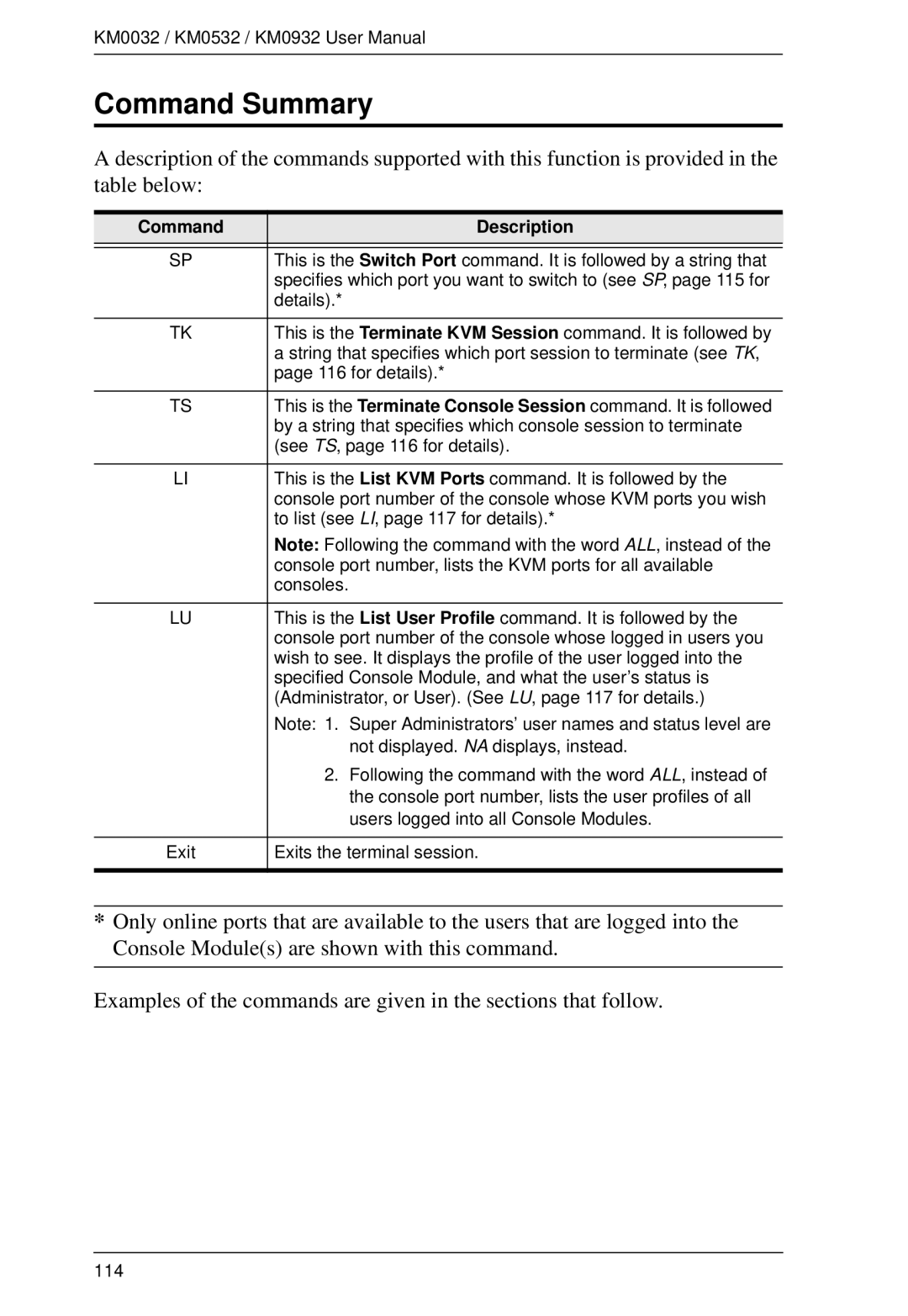
KM0032 / KM0532 / KM0932 User Manual
Command Summary
A description of the commands supported with this function is provided in the table below:
Command | Description |
|
|
SP | This is the Switch Port command. It is followed by a string that |
| specifies which port you want to switch to (see SP, page 115 for |
| details).* |
|
|
TK | This is the Terminate KVM Session command. It is followed by |
| a string that specifies which port session to terminate (see TK, |
| page 116 for details).* |
|
|
TS | This is the Terminate Console Session command. It is followed |
| by a string that specifies which console session to terminate |
| (see TS, page 116 for details). |
|
|
LI | This is the List KVM Ports command. It is followed by the |
| console port number of the console whose KVM ports you wish |
| to list (see LI, page 117 for details).* |
| Note: Following the command with the word ALL, instead of the |
| console port number, lists the KVM ports for all available |
| consoles. |
|
|
LU | This is the List User Profile command. It is followed by the |
| console port number of the console whose logged in users you |
| wish to see. It displays the profile of the user logged into the |
| specified Console Module, and what the user’s status is |
| (Administrator, or User). (See LU, page 117 for details.) |
| Note: 1. Super Administrators’ user names and status level are |
| not displayed. NA displays, instead. |
| 2. Following the command with the word ALL, instead of |
| the console port number, lists the user profiles of all |
| users logged into all Console Modules. |
|
|
Exit | Exits the terminal session. |
|
|
*Only online ports that are available to the users that are logged into the Console Module(s) are shown with this command.
Examples of the commands are given in the sections that follow.
114
